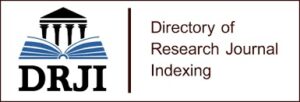AUTHENTICATION OF PHYSICAL PLANNING AUTHORITY AND BUILDING COLLAPSE: CONTEMPORARY CHALLENGES IN NIGERIA.
The control of physical developments, and proper coordination of present and future requirements, in addition to creating an enabling environment for living and working, is the major priority attached to planning organisations. Planning is beyond paperwork and approval, it’s the responsibility of designing authority to regulate development activities for the aim of supporting, enclosing, and protecting building structures likewise as inspecting buildings on sites after approval from the foundation level to the final. This study is to look into the authenticity of physical planning activities and building regulations in order to keep structures from collapsing. The study focuses on two objectives. Firstly, examine the procedural basis for physical planning regulations. Secondly, assess the structure physical planning system on contentious causes of building collapse. The study emphasizes two areas: Abuja, Federal Capital Territory, and Lagos City. A quantitative research method was included in the study. A total of 66 questionnaires were distributed. The Federal Capital Development Authority (FCDA) Abuja and the Lagos State Urban Development Board were among the forty-four (66) respondents surveyed for the study (LSUDB). On the working site, 20 workers were interviewed orally with the help of ad hoc staff. To identify the relationship and correlation coefficients between the physical planning authentication and structural failure. The study adopted a linear regression. The study found strong evidence of poor planning and coordination, particularly building plan interpretation, building plan approvals, and enforcement orders; poor building materials; and a low standard mixed ratio as a factor in building collapses. This research will help decision-makers, stakeholders, and site developers follow planning laws and building standards in order to minimize the rate of building collapse in Nigeria.
Keywords: Authentication; Physical planning regulation; Building collapse; Contemporary challenges; Safeguarding.




















